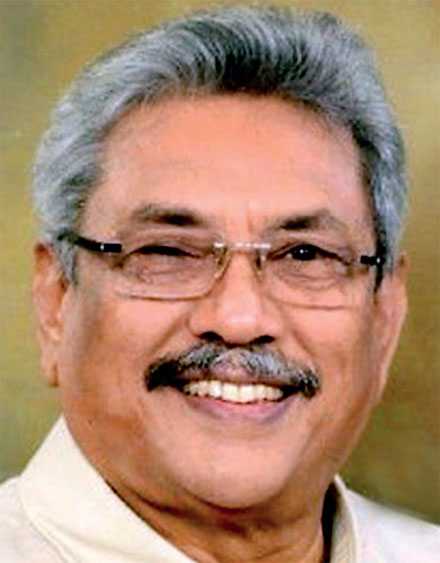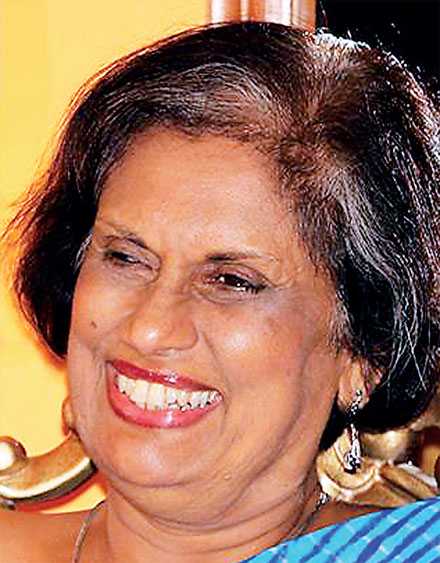Thursday Nov 28, 2024
Thursday Nov 28, 2024
Wednesday, 24 February 2021 00:00 - - {{hitsCtrl.values.hits}}

President Gotabaya Rajapaksa’s Vistas have to be delivered through Government process and will not happen quickly

He would do well to follow the thinking of President CBK and create a Project Monitoring and Implementation Unit
 Governance is defined as the process by which decisions are made and decisions are implemented. Good governance is when it is participatory, consensus-oriented, accountable, responsive to needs and inclusive.
Governance is defined as the process by which decisions are made and decisions are implemented. Good governance is when it is participatory, consensus-oriented, accountable, responsive to needs and inclusive.
As for Gotabaya Rajapaksa, he got teams of the brightest and best scholars and professionals to create his manual for good governance. This had detailed action plans to deliver his 10 key policies. This was new, innovative, and was an approach never used before by our politicians.
We see on TV glimpses of this style at his conferences. We always see three traits. He consults, and gets the views of many round the conference table, and manifests an action-oriented approach to address problems and does not spend time criticising the previous regime. He knows that there is not much meat left on that old bone.
His vision crafted in this unique innovative approach is called ‘Vistas of Prosperity and Splendour’. The question is whether the President’s Vistas will be buffeted and derailed by the winds of politics generated by self-seeking politicians. I hope not.
The beginning
In 2016, Gotabaya Rajapaksa, at the time a simple citizen of the country, had decided that he would make a pitch to be president.
His starting point was with a few friends to create an organisation to bring together intelligent people who had a concern and interest in the country, who could create the path to be president by developing a plan for the future.
The thrust of his approach was positive and it was to say ‘this is my vision for the country, and if you like it elect me to execute it’.
The man
Major General Kamal Gunaratne now the Secretary of Defence in his book ‘Gotabaya’ provides some fascinating insights into the man. He says that post war, for the first time he was in a big civilian role when he started a number of urban development projects. He says Gotabaya never took decisions based on only his opinion: “He obtained the ideas and advice of scholars. After obtaining their ideas and advice, he would then engage in a comprehensive discussion with them, and ultimately took the most accurate decision possible.”
He says: “Gotabaya was of the opinion that in order to progress towards becoming a developed nation, any future government must obtain the ideas and advice of scholars in implementing various subjects.”
Doing it his way
In 2016 Dr. Nalaka Godahewa was tasked with bringing together small discussion groups who met regularly and that became Viyathmaga. It filled a big need of providing a forum for the intelligent and experienced to debate and discuss the best social and economic strategies for the country.
The UNP and SLFP and SLPP never pursued such an approach. They believed that their collection of old party hacks was all that was required to form plans and strategies to win elections. Little thought was given to what would be done afterwards.
News about Viyathmaga spread through social media and the numbers increased rapidly. These discussions were a wonderful education for Gotabaya and he then thought the logical next step was to get Viyathmaga to consider proposals from a variety of sources ranging from the village to big business.
Taking in these inputs he got Viyathmaga to form 27 committees each focussing on some aspect to formulate the plans he could pursue when he became President. This became his plan for the country which he christened ‘Vistas of Prosperity and Splendour’. That was his manifesto for the election which he won and is now his vision as President.
Viyathmaga and President Rajapaksa
From the outset it was clear that Viyathmaga was going to play a role in the country. As he participated in the Viyathmaga deliberations he would have formed opinions about the participants and he would have identified who he felt were the stars.
Some of his early top appointments were from the private sector. The Chairman of the ETF and BOI and the Head of Tourism were probably stars he identified from the Viyathmaga ranks. He appointed a senior Viyathmaga team which included the Chairman of BOI and Dr. Nalaka Godahewa to select people for appointment to the boards of State-Owned Enterprises.
He also got some Viyathmaga people to contest the elections so that he could have some of them in Parliament. Viyathmaga had become an octopus with its tentacles everywhere.
Harnessing the best talent
What was new and innovative was to bring together the best talent to develop and implement plans and strategies for the country. However, he was not the first who had thought of this approach.
President CBK was the first President to bring together the best talents in the country to develop plans for each ministry. She created the National Council for Economic Development. Each ministry was supported by a cluster of the most relevant experts who in collaboration with the minister had to develop the plans for the ministry and then help to implement the plans. She also started the State Enterprises Management Agency to function like a holding company managing the big State enterprises. She also created a unit to monitor and implement the major infrastructure projects which was a great success.
President CBK knew that good ideas was the easy part and the real challenge was to implement them. Therefore a Project Implementation Unit was set up to monitor progress and to help to resolve problems that affected the implementation of projects. Unfortunately they were started during the latter part of her second term and could not have a good long run under her tenure.
Sadly President MR who followed her did not really buy into this type of structured, planned approach for running the country, plus his antipathy to anything started by CBK meant that all three innovative creations of CBK quietly sank to their haunches.
I read recently that they will now be officially terminated. That will be a big mistake. What is required is not termination but revitalisation.
The major difference between President Gotabaya Rajapaksa and President CBK is that CBK was more micro in developing specific action plans for each ministry. President Rajapaksa’s starting point was macro themes like ‘Productive Citizenry and a Vibrant Human Resource,’ ‘People Centric Economic Development,’ ‘Technology-Based Society,’ etc.
Viyathmaga Planning Unit
By 2019 Viyathmaga had around 2,000 members and they formed 27 committees to prepare his proposals and action plans. After intense discussions for months a programme of action consisting of 10 key policies was developed.
Under the umbrella of the big picture macro visions the detailed action requirements were identified for each subject area. His ‘Vistas of Prosperity’ are replete with dozens of “we will do” this and that. For example the chapter ‘A Safe and Secure Country for All’ has 54 “we will do”. The scenario is similar with all the 10 key policies
We must applaud the initiative and acknowledge, the thinking and effort his teams put into identifying the actions to achieve the macro vision of each of his 10 key policies. It is an amazing document putting together the many pieces like in a jigsaw puzzle to create the final picture. It is well written, clear, and specific, and clearly an output from good disciplined minds.
The challenge is to implement good ideas
Clever people can always generate interesting ideas. That’s the easy part. Implementing them is the real challenge.
In our parliamentary democracy the implementing agency is the Government. To implement any of these plans the first step is to get Parliamentary sanction/approval for the funds required. The funds approved then cascades down to the Government’s ‘agents’ for implementation, who are the ministers and their ministry staff of Government servants.
Neither the ministers who have come up the political ladder nor their Government administrative staff have been seasoned and baked in the real world of business, where if you deliver you are promoted and rewarded and if you don’t you are fired.
In the world of private sector business everyone knows that the skill required is to implement plans, and to get results. Setting out ideas in good prose without the skill to implement them will only lead to the door marked exit.
I know from my personal experience of working free for the Government for seven years that getting anything done in the Government sector is a tortuous journey navigating through the maze of financial and administrative regulations and procurement guidelines and the various gazettes that have added more regulations. They are all sacrosanct and cannot be ignored and no senior Government servant will ever dream of doing so. This is why everything operates in slow motion.
The President’s Vistas have to be delivered through this process and will not happen quickly. He would do well to follow the thinking of President CBK and create a Project Monitoring and Implementation Unit. This is one piece that is missing in the armoury of the President’s initiatives.